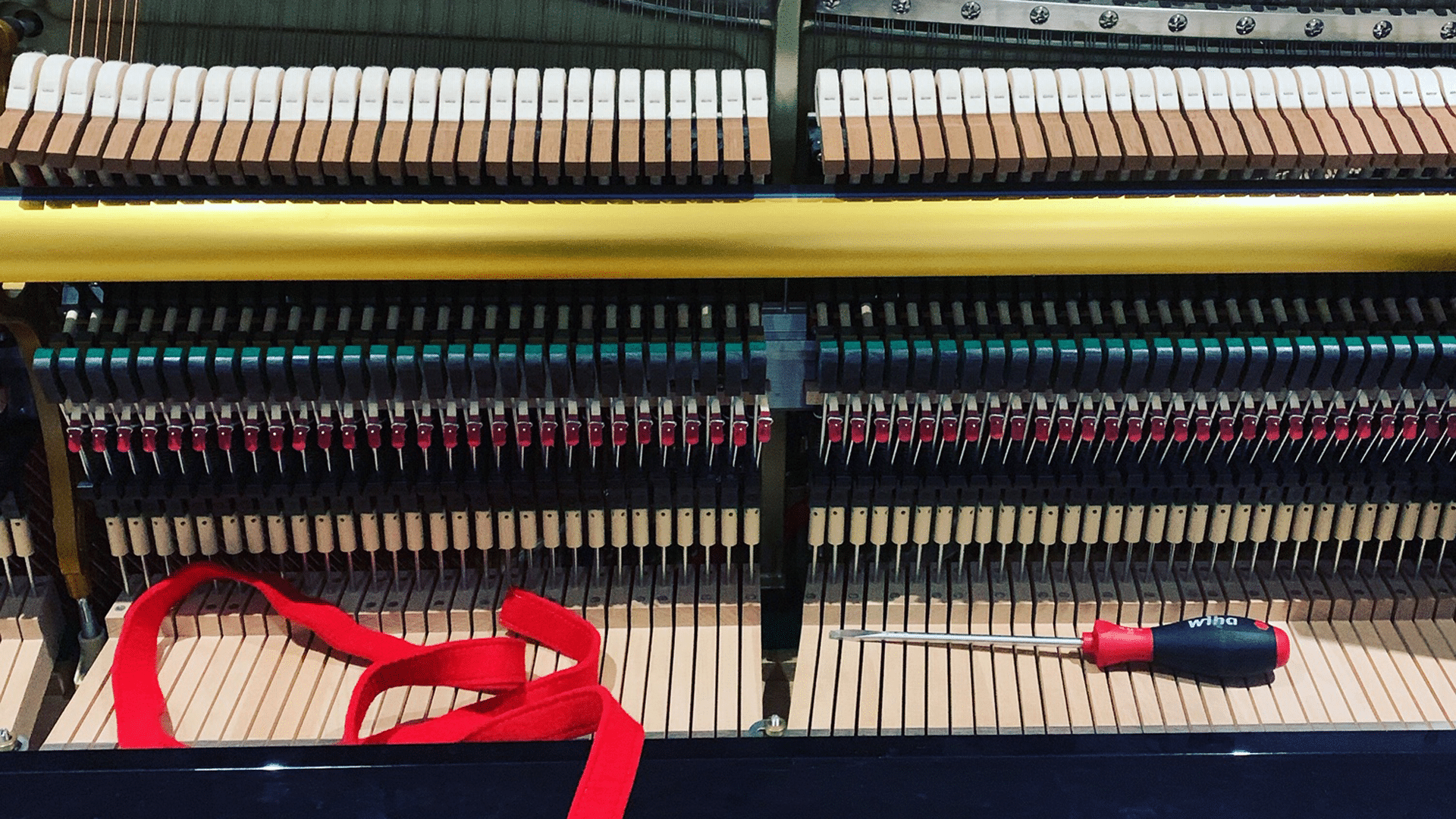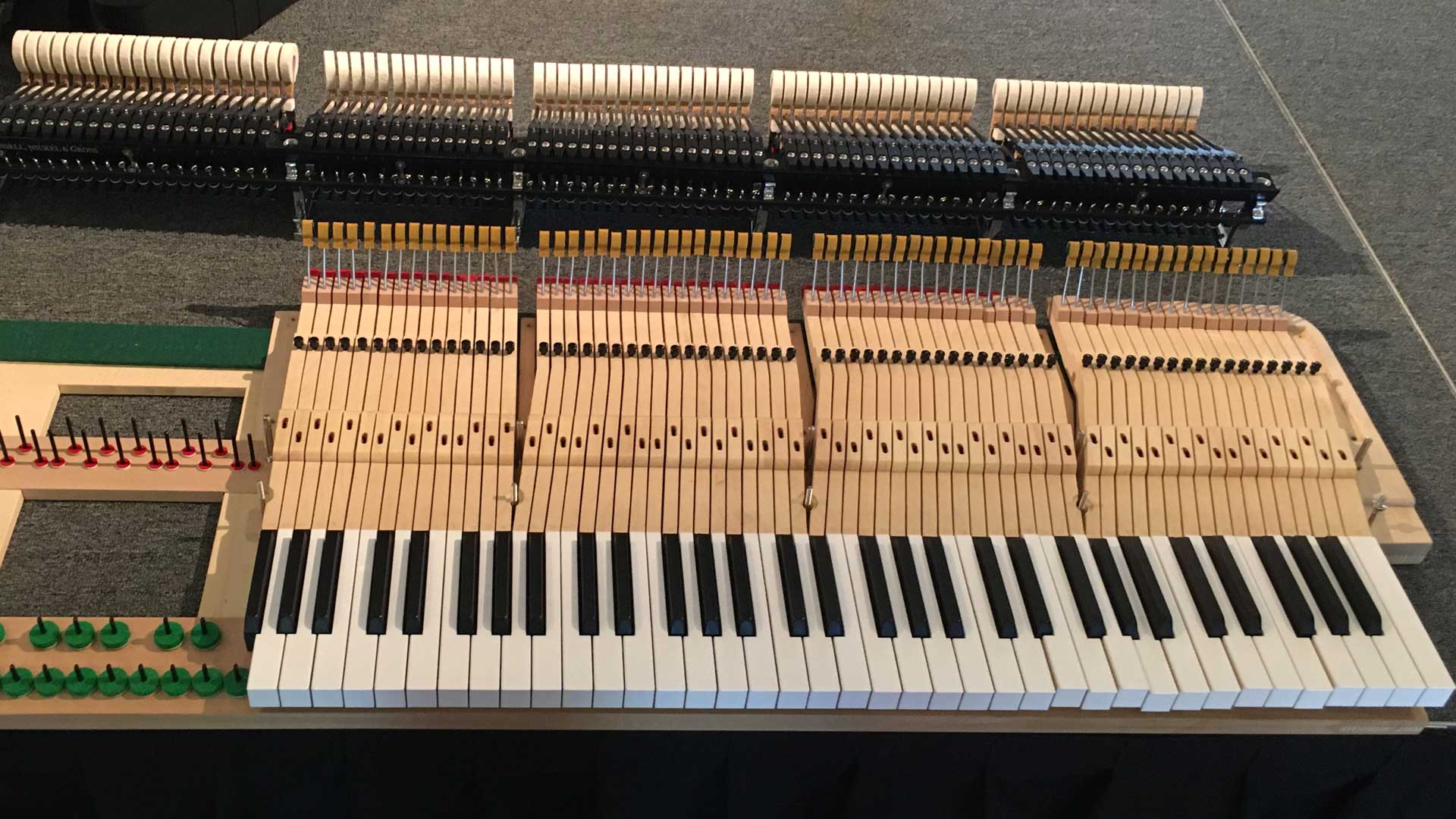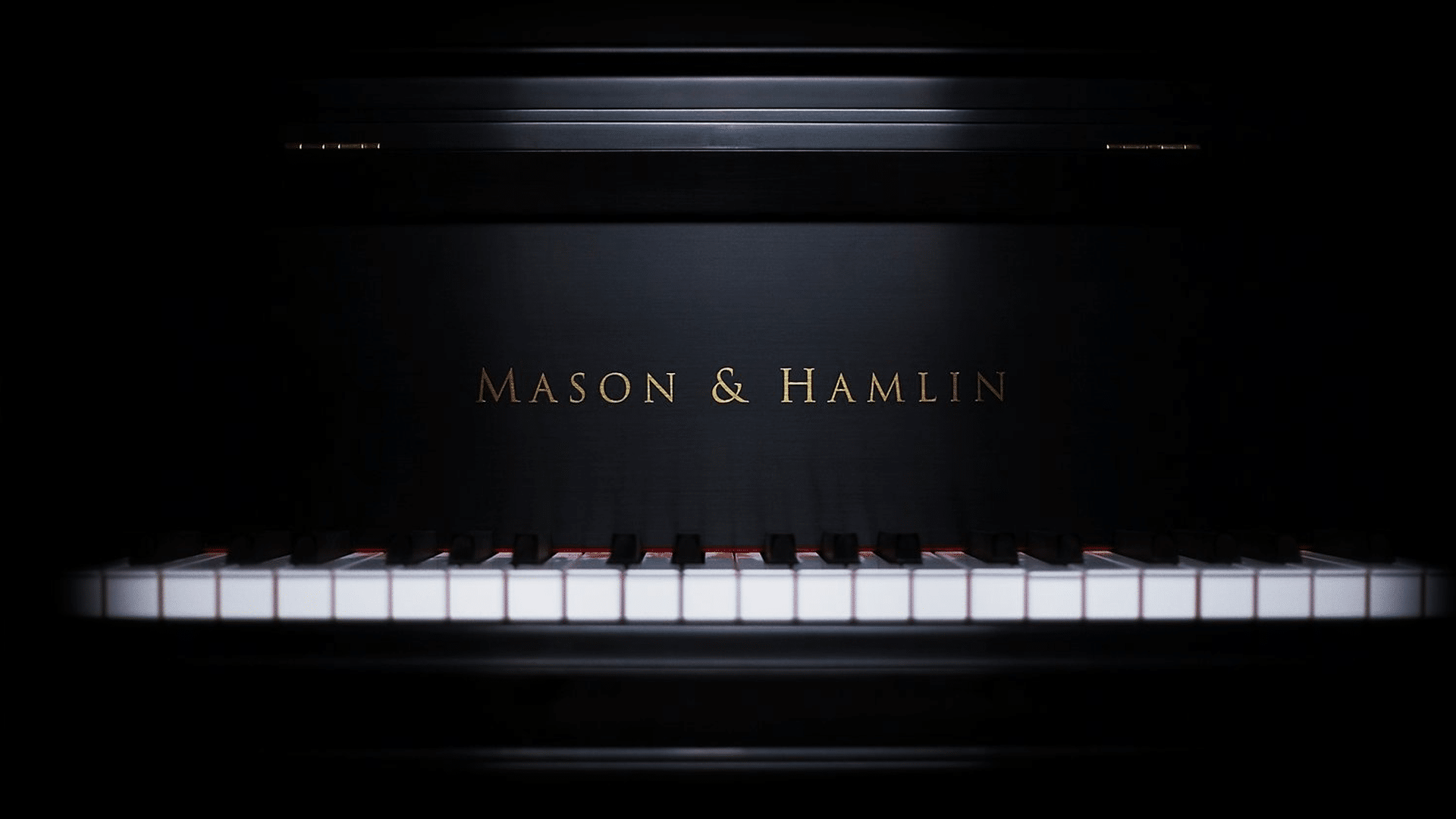Let’s start at the very beginning….
As Julie Andrews sang, it’s a very good place to start.
The piano was first known as gravecembalo col piano e forte. Translated it means harpsichord with soft and loud. The piano evolved from the harpsichord as musicians were frustrated with the harpsichords inability to play soft and loud. The harpsichord has quills which pluck the strings, and the action was modified so that the strings could be struck by a hammer. The piano is accredited to an Italian, Bartolomeo Cristofori and the year in my history books is 1709. The history of the piano is a large topic, and a good subject to study.
Until the 1930s, the United States of America, mainly New York was the piano manufacturing centre of the world. Today, pianos are manufactured in China, Indonesia, Korea, Japan, Czech Republic, Poland, Germany, Austria, Russia, Estonia, USA and Australia, with the majority of pianos being manufactured in China. There are so many names in piano brands however the name on the fallboard does not always mean there is a factory in existence of the same name.
Myths and the simple facts
I was brought up on an old ex-pianola in the house and I remember the songs of The Seekers being played on that instrument. I was drawn to the instrument, and I started to learn the piano when I was 8 or 9. We also had the piano tuned every year however later on I found out that it was tuned to around a semitone below the correct pitch. I thought my teacher’s piano sounded different. I now know why!
Back then, the generic advice was to buy a piano with a iron frame. Well, the truth is that the iron frame was patented in the mid 1850’s so that advice was a little outdated Buy a Beale piano was another one because the common idea was that they never needed tuning. The Germans build the best piano was another one, but there are so many German pianos out there with a name that was not a recognised piano factory. These names were placed on the panel (fallboard) just below the music desk.
They don’t make pianos like they used to is another great myth. It is true that building pianos is time consuming, however there were good and lesser quality instruments. That beautiful timber you admire on the older pianos is actually 1mm veneer glued on to hardwood and softwoods. Materials differ in price and the old saying time is money prevails. The modern piano is generally better designed and built than the older pianos. The modern factory of today can build over 100 pianos a day with computer controlled equipment, however there are more traditional factories only building a small amount of instruments per year. It is all about cost of production and materials.
I have seen so many pianos that were owned by a family member who studied at “xxxx College for the Musically Gifted” or Grandma had a beautiful piano that she had when she was growing up, and she knew quality. These instruments may have been in good condition 50 to 80 years ago, however these instruments were played and played and played, and unfortunately are not in the same condition that they were all those years ago. Many of these pianos are handed down to the next generation with all the best intentions, however most of these instruments are in poor condition and the cost of restoration far exceeds the value of the piano. Many of these instruments are difficult to play, not at the correct pitch, have poor sound, response and the beginner student finds them difficult to play and they simply lose interest, and believe that they have no musical talent. The description of a beginners piano is like trying to learn to drive a car that does not have brakes.
At the risk of upsetting the music teachers of the world, your piano teacher is not trained in the appraisal of pianos. Your piano teacher will have their personal opinion of different brands according to their experience of playing different instruments. Unfortunately some teachers do inspect the instrument their students are wishing to purchase, however they do not have the tools or trainingto appraise the condition of the piano. Leave the inside of the instrument to the technician.
The basic sound of the instrument cannot be changed. A piano can be made brighter or more mellow in sound however a technician cannot not make an instrument sound like another brand of piano.
The majority of the worlds concert halls replace their performance instruments between 5 and 10 years. A concert piano must have the ability to project its sound to the back of the concert hall as well as compete with a large orchestra. The strings lose some of their elasticity and tonal qualities, and the soundboards flatten and lose their sound projection. These pianos are often rebuilt in some way, or moved to a smaller venue, recording studios or even private homes. The concert piano is like a formula 1 race car, as it constantly needs refining to keep its condition at the pinnacle of performance.
The New Piano
Any piano is at its best performance condition when it is new. A new piano requires more frequent tuning to compensate the elasticity of the strings. After around 2 years, the strings stabilise, and require 1-2 tunings a year to keep it sounding its best. There are also adjustments to the regulation of the mechanism to compensate the compression in the felts and voicing of the hammers to adjust the sound from the hardening of the hammers from hitting the strings. This is the minimum required maintenance to any piano: new or old.
The piano eventually wears out from the hammers hitting the strings, the strings lose their elasticity and their breaking point lowers due to metal fatigue, the soundboard flattens out, the tuning pins lose their grip in the tuning plank, the bridges develop cracks from the constant pressure from the strings and the wood can develop cracks from the constant changing of humidity. The climate the piano resides in has an effect on the wooden parts of the piano. The wood in the piano is dried to the average of 9% moisture content, and to maintain this the piano is recommended to reside in a humidity range of 40 to 55%. In our sub-tropical environment, some pianos adapt to the higher humidity levels, however some instruments will require the fitting of a climate control system to help with tuning stability and to prevent sticking notes.
The Older Piano
Don’t get me wrong. There are some very good older pianos out there. Unfortunately, they are not very common. These pianos have been kept in a good environment, well maintained with regular tunings to the correct pitch as well as adjustments to the action and attention to the hammers. If you are looking for an instrument to study music, it has to be a standard that is slightly better than the pianist, and if you only require a piano for recreation, it still needs to be enjoyable to play and sound good. Like any other machine, it requires maintenance.
Looking for a piano?
There are so many different pianos in the marketplace with different timber finishes, furniture styles, heights and lengths, prices as well as names. It can become confusing when you find out that brand X and Z were built in the same factory on the same assembly line. These pianos can be similar to the piano technician, however the marketing brochure tells you something different. My advice is to do as much research as possible and don’t take everything that you are told to be true.
Go out and try as many different instruments as possible. Play the instruments that are out of your budget. You will discover the type of piano sound that appeals to you. If you play advanced music, you will require a very good upright or a grand as the piano has to be a little better in performance than the player. If you are a beginner, you will still require a instrument that performs correctly and is tuneable. There are so many different pianos out there.
Need advice?
I am an independant piano technician and can offer advice in purchasing a piano as well as the correct maintenance of the instrument. If you require a condition report on the piano you are purchasing you can contact me or another independent technician.



